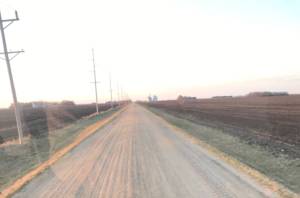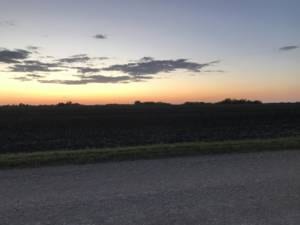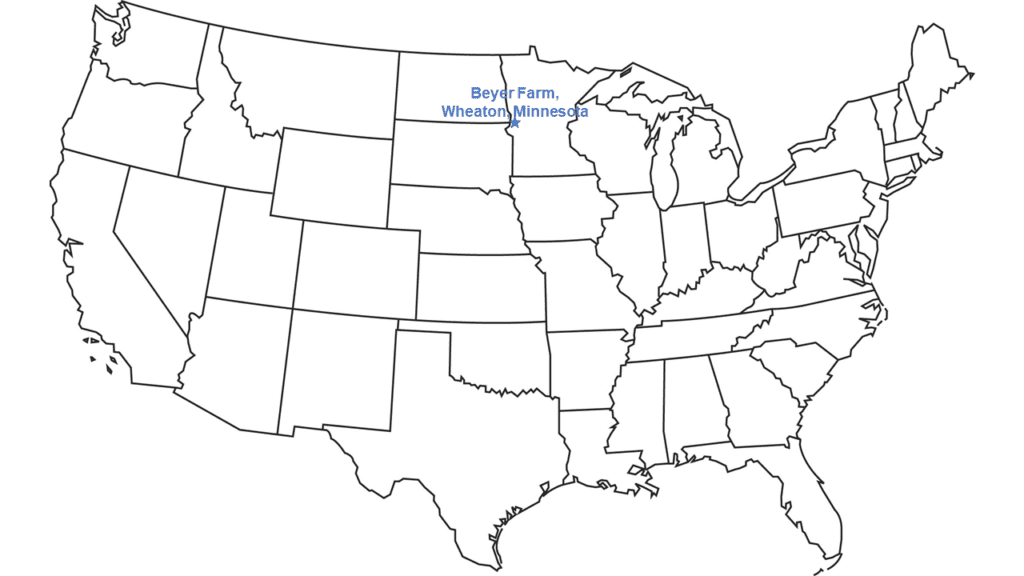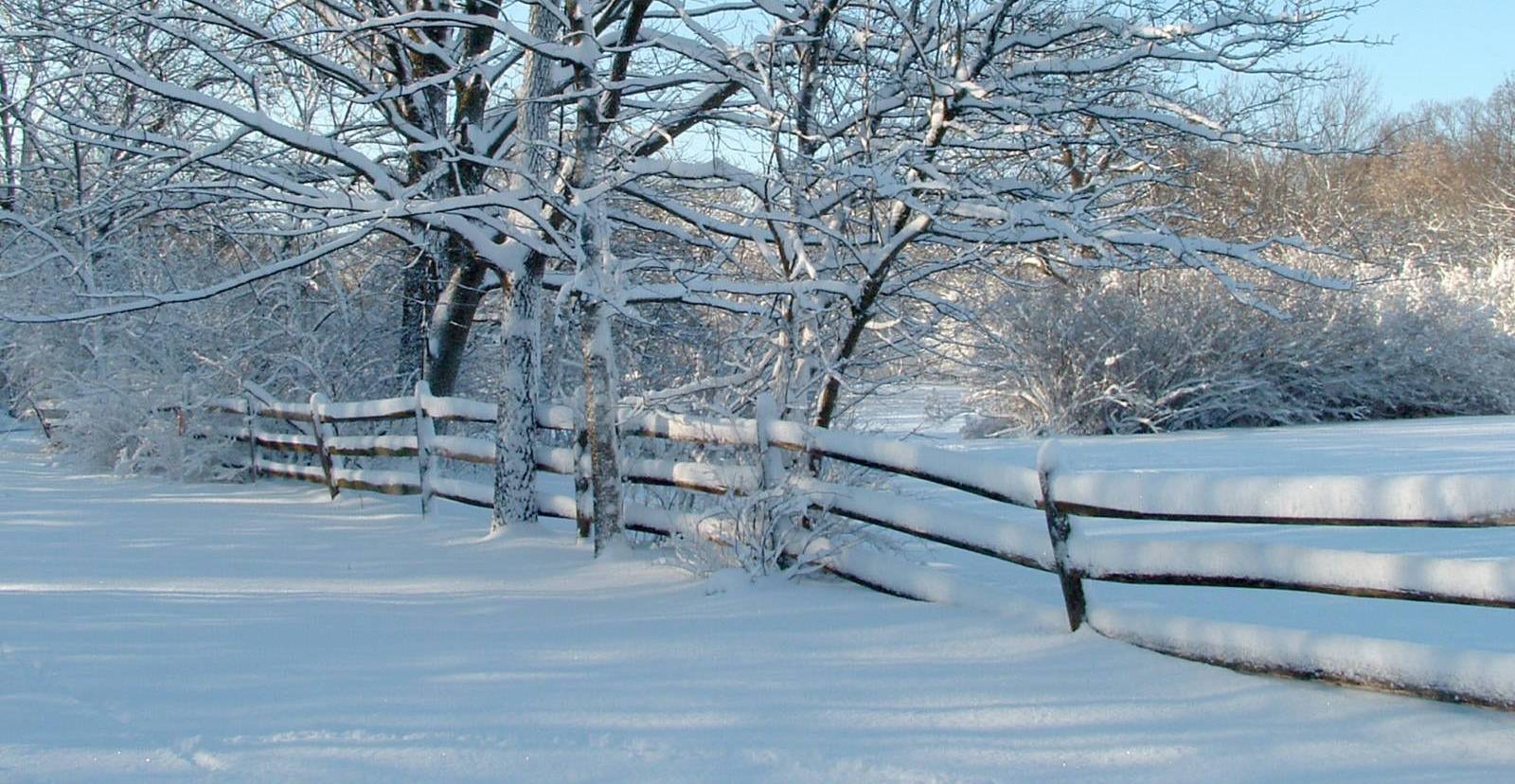 The weather in our area of the north-central U.S. Midwest has gotten cold, and the ground is now frozen. Fortunately, the beautiful fall weather allowed us to get all the fall fieldwork done that we wanted – and more. By early December, we finished all the ditching, tiling, field tillage and fertilizing we planned to get done. And the rye cover crop in our no-till fields grew to about 7.5 cm, or 3 inches, and it has gone dormant for the winter.
The weather in our area of the north-central U.S. Midwest has gotten cold, and the ground is now frozen. Fortunately, the beautiful fall weather allowed us to get all the fall fieldwork done that we wanted – and more. By early December, we finished all the ditching, tiling, field tillage and fertilizing we planned to get done. And the rye cover crop in our no-till fields grew to about 7.5 cm, or 3 inches, and it has gone dormant for the winter.
So we turned our attention to planning for 2021. As soon as we finished fieldwork, seed salesmen immediately started calling and asking for our orders for next spring.
Throughout the year, we gathered a lot of data. We have been taking time to review that information this month to plan what crops will be planted in what fields next spring. We always keep a couple fields in mind that can be flexible, depending on the weather, crop prices and whatever unexpected things come up then. But we want to have mostly firm plans for most of our fields. Based on current price trends, we may lean more toward soybeans in those flexible fields next year.
We have been debating what soybean genetics and herbicide-tolerant traits we want to use next year. We have been raising seed soybeans with the trait that provides tolerance to 2,4-D, one of the most common, reliable options we have for weed control. We have often been among the first in the U.S. to plant some of those varieties to be sold as seed the following year. That’s both exciting and terrifying.
The varieties are so new and being brought to market so quickly that the agronomic ratings for disease tolerance and other factors used in seed selection aren’t completely accurate yet. The defensive agronomics aren’t built into the varieties yet, but our experience has shown the ease and effectiveness of the herbicide system. Our experiences make it hard to decide what soybean herbicide system we want to use.
 However, we have ordered our seed for next year. We’ve also ordered many other inputs, including supplemental liquid fertilizer for at-planting and in-season applications, herbicide, insecticide and fungicide. The supplier we work with can order our products and have them on hand so that we don’t have to worry about spring delivery. In our area, spring transportation can be slow or difficult to manage, especially if the Mississippi River thaws late.
However, we have ordered our seed for next year. We’ve also ordered many other inputs, including supplemental liquid fertilizer for at-planting and in-season applications, herbicide, insecticide and fungicide. The supplier we work with can order our products and have them on hand so that we don’t have to worry about spring delivery. In our area, spring transportation can be slow or difficult to manage, especially if the Mississippi River thaws late.
With the data analysis, we also are paying close attention to our financials. We need to determine what to buy or sell by the end of the year for tax purposes. This fall, we bought a new sprayer for pesticide applications. The old one was getting worn out, and our hired men agreed we needed a new one. We also bought a new grain cart for harvest next year. The new equipment has been delivered and it joined the rest of our equipment in the shed for the winter.
The money we spent to order our 2021 inputs came from the large crop we had in 2019 and delivered to market throughout 2020. This year’s crop was smaller, so though prices are increasing, we still need to manage our budgets to make sure we will make enough delivering the 2020 crop through the next eight months in 2021 to pay for 2022 inputs.
In fact, based on prices, we will likely start delivering our 2020 crops in January and February. Soybean prices are increasing, and we deliver them to a local elevator, where a train takes them to the Pacific Northwest for export. This year, we will probably deliver all of our soybeans before we start planting next spring. The good weather gave us plenty of time at harvest to adjust our machinery and ensure we harvested good quality soybeans. We also currently have a much higher basis than normal for this time of year at our local ethanol plant, where we deliver our corn.
 That’s our full cycle, and Rodd and I have enjoyed sharing it throughout the year. 2020 showed us the value of the risk management that is a critical part of our winter planning. When preparing and planting last spring, we were optimistic about the growing season, and the crops were doing well. But the July hailstorm that hit our farm made us very thankful for tools like hail and crop insurance that helped us manage losses. These tools helped us prepare for harvest, when weather swings reinforced the value of risk management. All the fall fieldwork we finished should help minimize the challenges created by our short planting window this fall north.
That’s our full cycle, and Rodd and I have enjoyed sharing it throughout the year. 2020 showed us the value of the risk management that is a critical part of our winter planning. When preparing and planting last spring, we were optimistic about the growing season, and the crops were doing well. But the July hailstorm that hit our farm made us very thankful for tools like hail and crop insurance that helped us manage losses. These tools helped us prepare for harvest, when weather swings reinforced the value of risk management. All the fall fieldwork we finished should help minimize the challenges created by our short planting window this fall north.
And so, once again, we have lots of optimism as we look forward to the next crop year. We will spend the rest of the winter planning, ice fishing to enjoy the great outdoors, and dreaming about possibilities for 2021.

